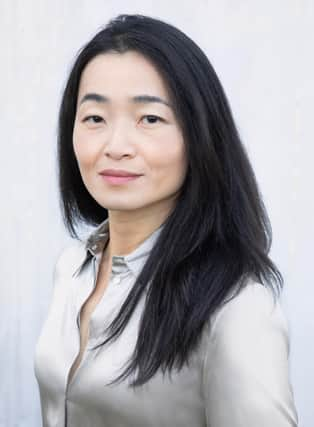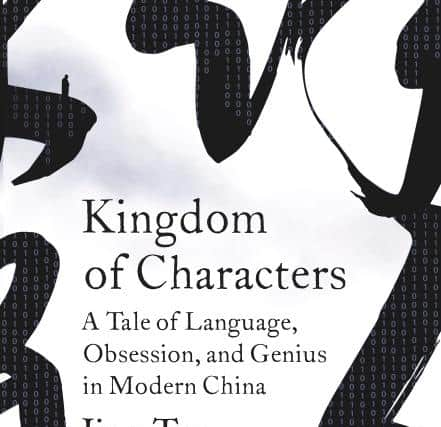Book review: Kingdom of Characters, by Jing Tsu


If I had my time again, I would be sorely tempted to study Sinology. A few years ago I binge-read about China – the work of writers like Jonathan Spence, Julia Lovell and Rayne Kruger, and more recently Roel Sterckx. At the same time I started to read the Chinese classics in translation, books like Pu Songling’s Strange Tales From A Chinese Studio, Cao Xuequin’s The Story Of The Stone and the astonishing Luo Guanzhong’s The Romance Of Three Kingdoms. So I was more than delighted to read Jing Tsu’s incredibly fascinating book, subtitled “The Language Revolution That Made China Modern”. It at least made me realise that actually learning Chinese would be a decade’s undertaking, and that insight came from a native speaker.
Chinese is the oldest written language in the world, and this book is very much an aperture book. Look through its linguistic premise and a whole panorama of politics, technology and aesthetics springs into life. It answered a question I had long pondered. The computer of which I am typing this has a QWERTY keyboard – 92 characters. Chinese had, in the 1990s, 20,902 Han characters digitised. In 2020 Unicode 13.0 had, apparently, 92,856. New proposals will extend that even further. What I had wondered was “what would a Chinese typewriter look like, given how extensive, and how subtle, their calligraphy is?” A second question bubbled beneath this. The invention of moveable type for the Roman alphabet we use was widely thought to be instrumental in the expansion of the Reformation in Europe (even though, as Jing Tsu wryly observes, it was only 400 years ago we decided that “i” and “j” should be different letters). The unfortunate Paganini brothers produced the first printed Qur’an in the 1530s: early modern printing technology was notoriously prone to errors, and when you are dealing with sacred texts that can be more than problematic. Did China’s way of representing language impede its progress toward what we in the West like to call “enlightenment”?
Advertisement
Hide AdMarx said that China was “a mummy”; a dead empire. In the 19th and 20th centuries it must have felt like that after various humiliations, including the Opium Wars, the Boxer Rebellion, the numerous foreign powers staking claims around it. Many intellectuals began to think that the veneration of tradition and mass illiteracy were accountable. How might China embrace Western technologies and educational practices without losing its distinct identity? As Jing Tsu eloquently shows, from typewriters to telegrams to digitisation there has been a paradox at the centre of China’s infrastructure. On one hand there is the “adopt and adapt” school, on the other “do it ourselves, but better”. The use of alphabetic script was a political anxiety. Did it represent a “kow-tow” to Europe or an accommodation with it?


Jing Tsu makes an important point that Chinese has a vast number of tonal variations and homophones. She quotes, brilliantly, an almost surrealist little story by Wang Zhao, first in “succinct Chinese” ideograms, then in English translation and then how it would be in alphabetic transcription without tone marks, where it becomes 106 repetitions of the letters “shi”. I feel that viscerally. My parents still make me wince for the time when I snarled at my brother that he was the “eppy-toam of ignorance”, since I had read the word “epitome” but never actually heard it. Moreover, the simple letters of “café” and “façade” require slight variations in order that you can pronounce them as well as understand them.
The book would be dry if it were not for the cast of characters. We meet engineers, novelists, monks, rogues, brave librarians, imprisoned geniuses. It humanises what might seem like a fringe concern. It also gives the reader insight into the geopolitical dilemmas around what was once brush-marks on paper. Should the Taiwanese or Hong Kong version of a glyph be subordinate to the one used in the People’s Republic of China? Are they separate or mere variants? Quite obviously, this has ramifications. Even more than that, given that individual scribes in different countries at disparate times may have made a slip, is that counted as unique dialect or error? It seems strange to compare this with Scotland and the language questions here, but it is pertinent. There is no English word for “driech”, but even how we use either “wun” or “yin” for “one” is telling. We might even expand the alphabet with a new letter to help our Southern friends pronounce “loch”.
It was a pleasing coincidence to read this remarkable book and dip in at the same time to Wong May’s translations of Tang poetry, In The Same Light. This work of 200 poems is the kind of book where you really need to sit and think after each sip. I knew some of the poems, but knew them from old translations, so I both had read them and had not read them, and in some ways never will read them. It has a superb essay to accompany it, delineating the features and complexities of Tang poetry.
China, it has been said, conquered its conquerors. Jing Tsu’s book may be as prophetic as it is historical. Wong May’s book makes us realise what we lose by lack of patience.
Kingdom of Characters, by Jing Tsu, Allen Lane, £20
A message from the Editor:
Thank you for reading this article. We're more reliant on your support than ever as the shift in consumer habits brought about by coronavirus impacts our advertisers.
If you haven't already, please consider supporting our trusted, fact-checked journalism by taking out a digital subscription at https://www.scotsman.com/subscriptions